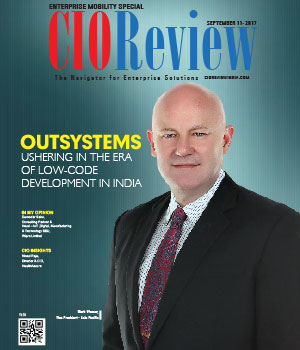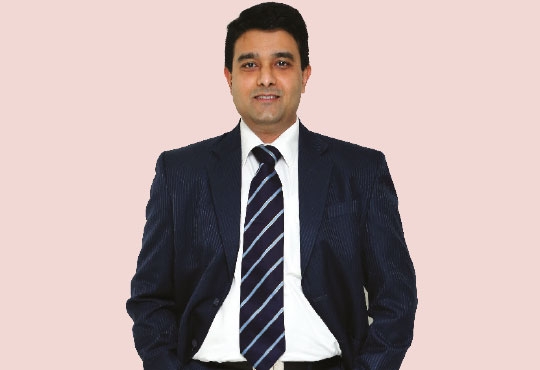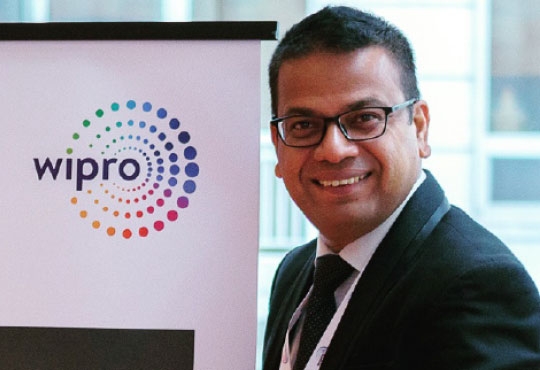
The Changing Landscape of IT
Glenn R. Strachan, CIO, Jhpiego | Tuesday, 19 September 2017, 06:55 IST
 When I first began my tenure as CIO with Jhpiego, a global health nonprofit and affiliate of Johns Hopkins University, it was readily apparent that there was no real plan for the state of Information Technology (IT) and the role it could play in supporting the initiatives of the organization. During my first four months on the job, I spent time understanding the organization itself and the main business processes that support its daily operations. I was able to determine that the only enterprise-wide solution was the email system combined with the Microsoft Office suite.
When I first began my tenure as CIO with Jhpiego, a global health nonprofit and affiliate of Johns Hopkins University, it was readily apparent that there was no real plan for the state of Information Technology (IT) and the role it could play in supporting the initiatives of the organization. During my first four months on the job, I spent time understanding the organization itself and the main business processes that support its daily operations. I was able to determine that the only enterprise-wide solution was the email system combined with the Microsoft Office suite.
The organization was comprised of 40 country offices that lacked IT support, except for our two biggest offices in Kenya and Tanzania. Each of these offices had only a couple of IT officers to support several hundred people. Given the disparity of technical support available in our overseas offices, and the lack of a centralized plan to service the needs of our headquarters, I organized a plan to create a new paradigm.
Action One
To explain to our new program development staff that an IT support person was critical in each of our offices and that all future funding proposals needed to take this into account. This was the first step toward building a global IT support team.
Action Two
To survey all the various software solutions used by our staff worldwide and begin the slow process of moving everyone toward a single, supportable software solution. We implemented Dropbox to facilitate an easier process for transferring files between our staff, which has now grown to 3,800, clients including the United States Agency for International Development (USAID) and partners such as Save the Children. We also implemented CRM within our corporate office to help support our business development team to better communicate and share our contact information with our executive team, allowing our president to always be aware of the funding partners and possible partnerships we have contacted at any given time.
Action Three
To establish a hardware standard that covered every piece of equipment from servers to firewalls and wireless access devices in each office. Many offices lacked the appropriate bandwidth and equipment needed to become part of the bigger whole, a concept that I explained to my fellow leadership team at Jhpiego. It is important to note that grant money from our funding agencies, such as USAID, pay for the equipment purchased in each office, and a budget for this equipment must be included at the time of the bid. When I arrived at Jhpiego, they were just beginning to go through a growth spurt, and I was able to get IT functions and equipment in more projects. Today, we have IT personnel in 34 of our 41 country offices and a roving IT officer who visits the remaining offices that lack on-site coverage.
Action Four
To move the entire organization into the Microsoft Office 365 Cloud and remove all on-site server solutions. It took a number of years of thinking about, and then concluding, that this was the appropriate direction for the entire organization. With this move, we solve our business continuity issues where an on-premise hosted solution was financially beyond our grasp. We are also moving everyone from Dropbox into OneDrive, saving on the annualized cost for that service. OneDrive offers 10 times the amount of useable storage and is part of a favorable pricing scheme because of our nonprofit status. We will be rolling out a second generation Sharepoint solution for our organization that more closely aligns with the implementation of our major knowledge management initiative.
Tackling Challenges
Budgeting is a key issue at a nonprofit because we are unlikely to be able to finance any solution over a single year and, will instead, use a cafeteria-type plan and extend the purchase over three years. This means that you are often dedicated to a decision you made and must follow through on it. This does not mean you are completely tied down, but it does make you less agile.
Faster delivery is always a challenge, particularly when planning for a major project, such as the year-long process of moving an entire organization into the Microsoft Cloud. There is certainly the low-hanging fruit, such as moving mailboxes from our server into the cloud, but that takes on different proportions when you consider that 50 percent of our overseas staff are located in low-bandwidth settings. So, we have created benchmarks for moving US-based users, higher bandwidth overseas users, and finally the lowest bandwidth users and trust that this move can get done within our schedule. Everything else we work on has a project charter that spells out deliverables with discrete time requirements. Our staff goes home tired every day.
Succeeding in the New Enterprise Landscape
Running and walking provide me ample time to listen to the latest technology podcasts. I am a voracious reader so I am constantly searching for online tech articles. I also enjoy spending time with other technologists. All of this goes into preparing me to be able to make the right decisions for the organization. It also has helped that I am good at keeping track of a lot of details, including financials, in my head.
Virtual reality technology is something I am trying to introduce to our innovations group in the belief that we will be able to simulate safe surgery procedures that can be taken into the field and play a role in improving voluntary medical male circumcision and other surgical interventions.
I am also excited about Internet bandwidth improvements throughout Africa. I have found that bandwidth doubles every two years, and the price is cut in half. This provides us with an opportunity to extend Web-based solutions to additional offices.
CIO Viewpoint
Factors to Consider for a Successful Enterprise...
By Ramesh Krish, CTO, Indium Software
By Glenn R. Strachan, CIO, Jhpiego
By Ninad Raje, Director & CIO, HealthAssure
CXO Insights
"The Three Pillars of Modern Enterprise...
By Dave Schuette, EVP & President Enterprise Business, Synchronoss Technologies [NASDAQ:SNCR]
Building a Business Case for the CIO's Digital...
By Jason Mowery, Director of Digital and Mobile Solutions, KPMG Advisory
The Pillars of Digital Economy - IoT, Mobility,...





![Dave Schuette, EVP & President Enterprise Business, Synchronoss Technologies [NASDAQ:SNCR] cxoinsight](https://www.ciotechoutlook.com/newsimages/540x370_6307AFYf.jpg)

